python3读取图片并灰度化图片的四种方法(OpenCV、PIL.Image、TensorFlow方法)总结
在处理图像的时候经常是读取图片以后把图片转换为灰度图。作为一个刚入坑的小白,我在这篇博客记录了四种处理的方法。
首先导入包:
import numpy as np
import cv2
import tensorflow as tf
from PIL import Image
方法一:在使用OpenCV读取图片的同时将图片转换为灰度图:
img = cv2.imread(imgfile, cv2.IMREAD_GRAYSCALE)
print("cv2.imread(imgfile, cv2.IMREAD_GRAYSCALE)结果如下:")
print('大小:{}'.format(img.shape))
print("类型:%s"%type(img))
print(img)
运行结果如下图所示:
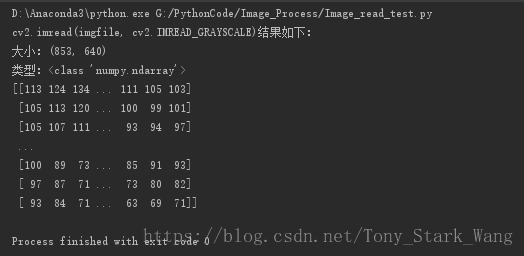
方法二:使用OpenCV,先读取图片,然后在转换为灰度图:
img = cv2.imread(imgfile)
#print(img.shape)
#print(img)
gray_img = cv2.cvtColor(img, cv2.COLOR_BGR2GRAY) #Y = 0.299R + 0.587G + 0.114B
print("cv2.cvtColor(img, cv2.COLOR_BGR2GRAY)结果如下:")
print('大小:{}'.format(gray_img.shape))
print("类型:%s" % type(gray_img))
print(gray_img)
运行结果如下:
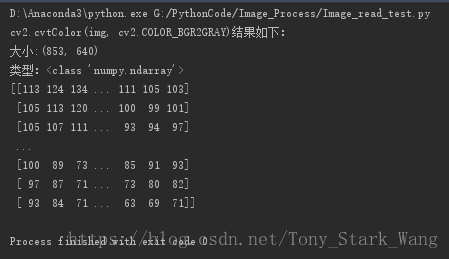
方法三:使用PIL库中的Image模块:
img = np.array(Image.open(imgfile).convert('L'), 'f') #读取图片,灰度化,转换为数组,L = 0.299R + 0.587G + 0.114B。'f'为float类型
print("Image方法的结果如下:")
print('大小:{}'.format(img.shape))
print("类型:%s" % type(img))
print(img)
运行结果如下:
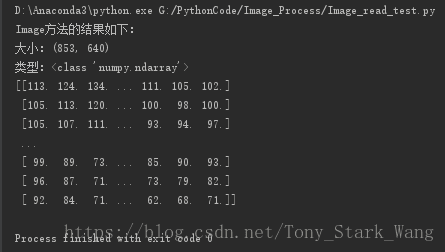
更多关于使用PIL库中的Image模块的convert()函数的知识请参考博客:https://www.jb51.net/kf/201603/492898.html
方法四:TensorFlow方法:
with tf.Session() as sess:
img = tf.read_file(imgfile) #读取图片,
img_data = tf.image.decode_jpeg(img, channels=3) #解码
#img_data = sess.run(tf.image.decode_jpeg(img, channels=3))
img_data = sess.run(tf.image.rgb_to_grayscale(img_data)) #灰度化
print('大小:{}'.format(img_data.shape))
print("类型:%s" % type(img_data))
print(img_data)
运行结果如下:
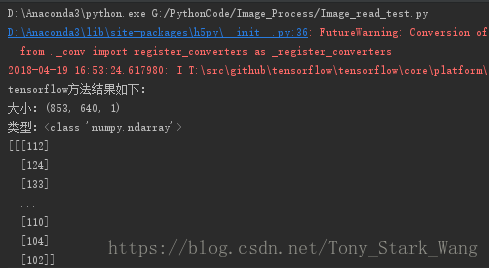
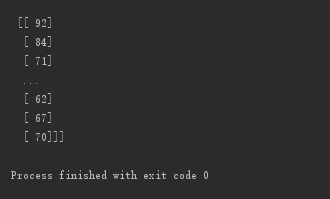
可以看出:TensorFlow的方法的结果与上面的三种方法的处理结果略有不同。所以在处理图像的时候最好保持方法的一致性,最好不要用这种方法读取完图片然后用另一种方法处理图片,以避免不必要的bug影响图片处理处理结果。
您可能感兴趣的文章:python使用TensorFlow进行图像处理的方法Python通过TensorFLow进行线性模型训练原理与实现方法详解Python Tensor FLow简单使用方法实例详解Python tensorflow实现mnist手写数字识别示例【非卷积与卷积实现】Python3.7安装keras和TensorFlow的教程图解python3.6.3安装图文教程 TensorFlow安装配置方法python生成tensorflow输入输出的图像格式的方法python tensorflow学习之识别单张图片的实现的示例Python图像处理之识别图像中的文字(实例讲解)Python基于Tensor FLow的图像处理操作详解